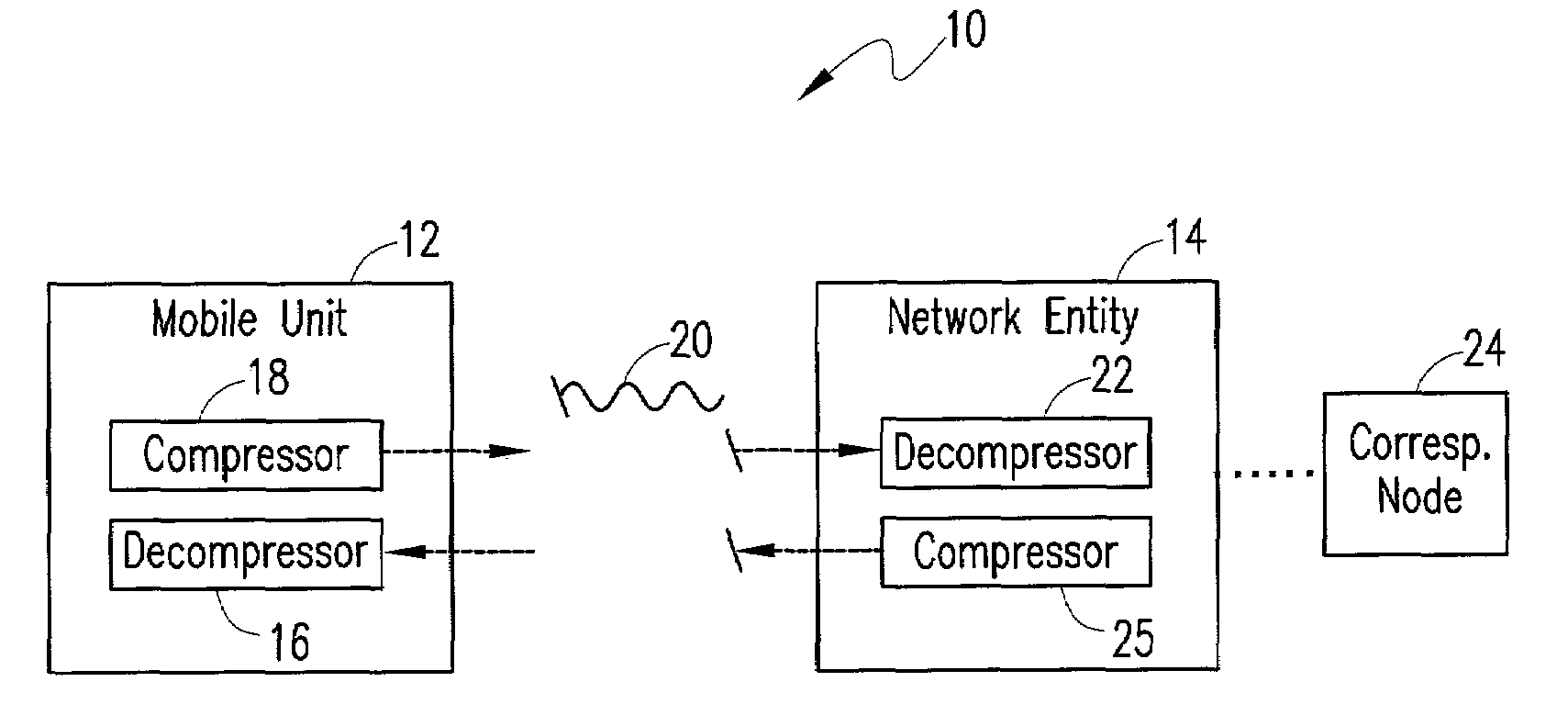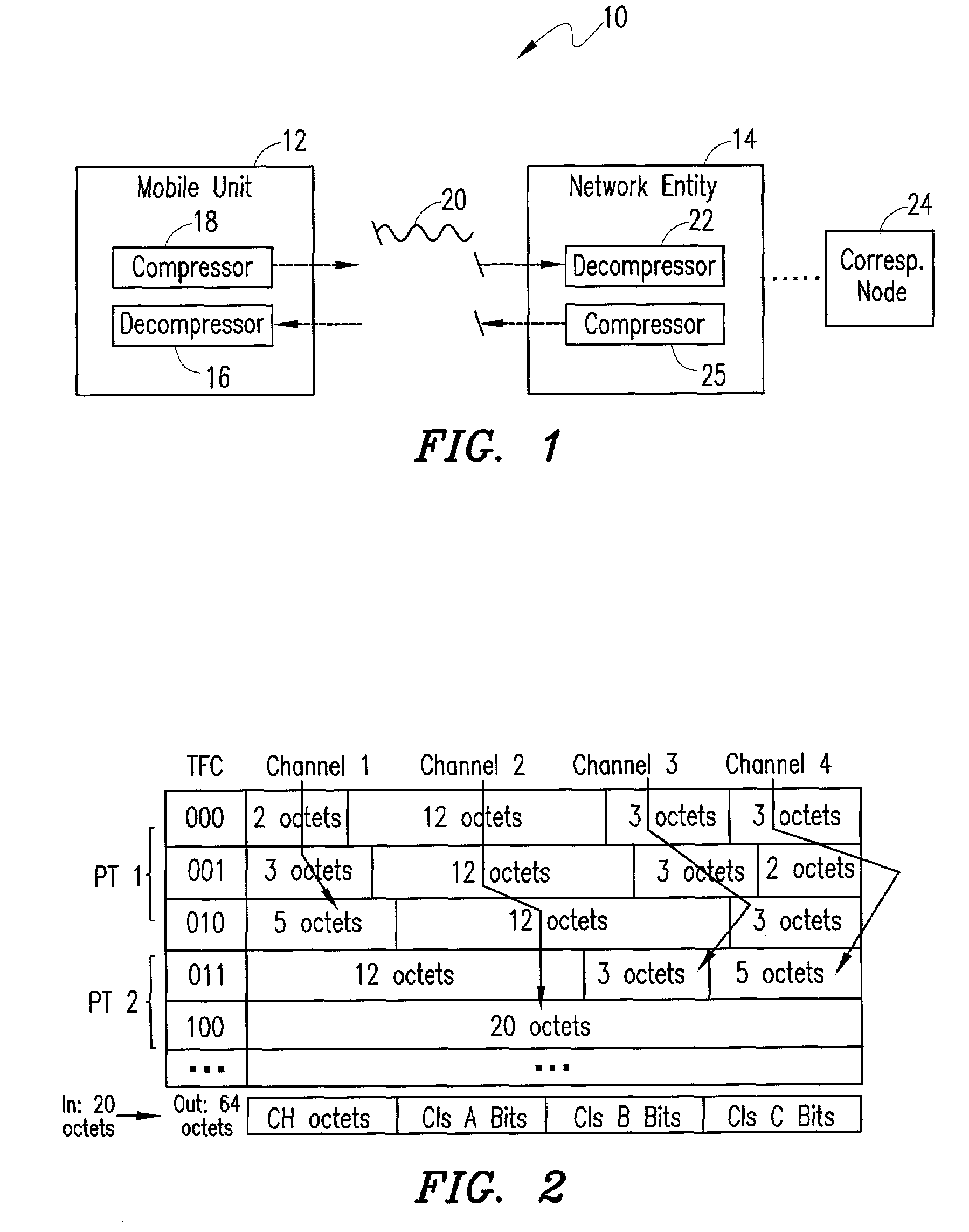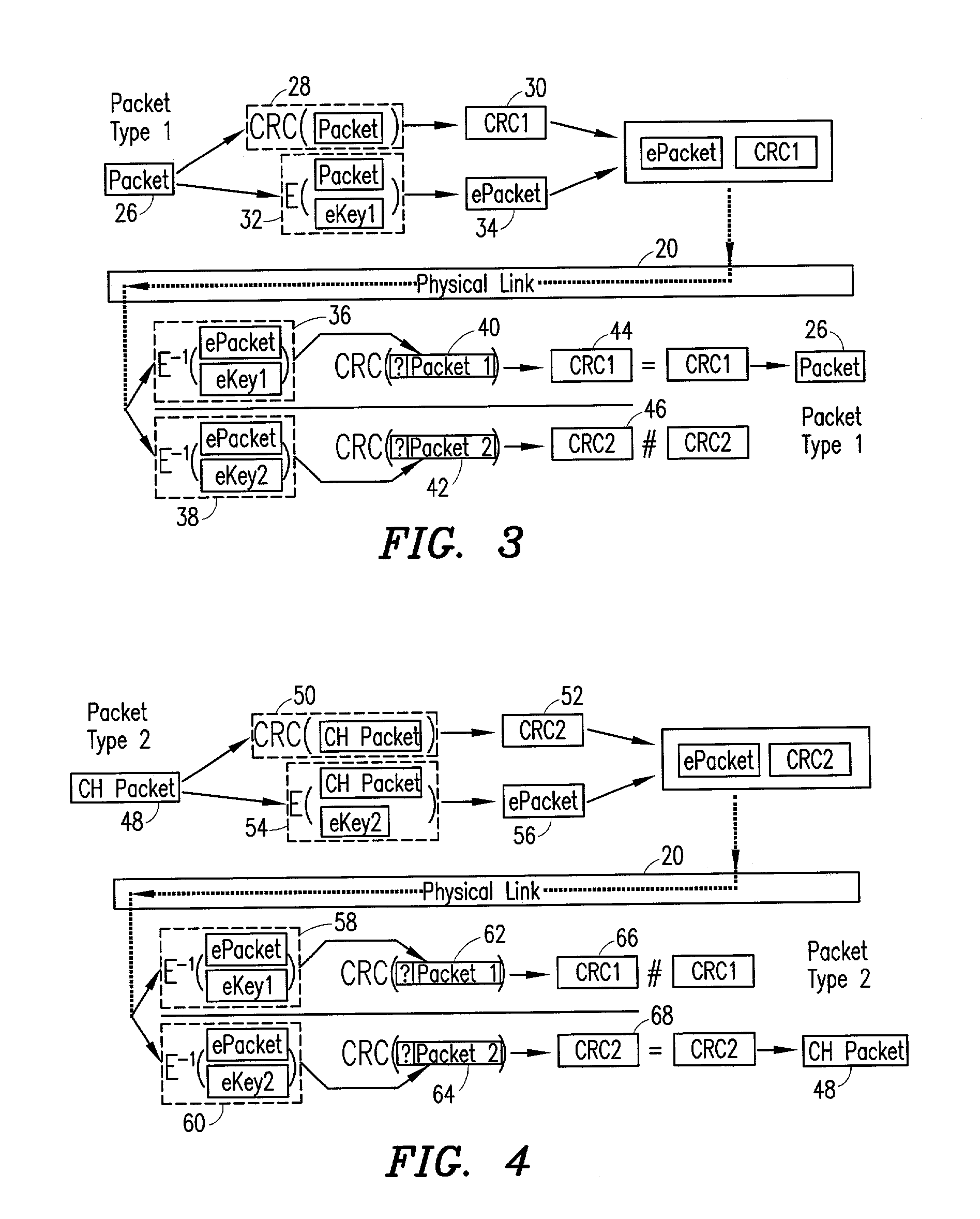Implicit packet type identification
a packet type and identification technology, applied in data switching networks, multiplex communication, equal length code receivers, etc., can solve problems such as inefficient link use, difficult to use ips in connection with narrow band links such as wireless and cellular links, and become a challeng
- Summary
- Abstract
- Description
- Claims
- Application Information
AI Technical Summary
Benefits of technology
Problems solved by technology
Method used
Image
Examples
first embodiment
[0018]In the invention, compressor 18 and decompressor 22 negotiate one or several specific packet sizes which will be used to identify header free packets. This is possible, since a 0-byte header compression, to provide a header free packet, is only usable over specific links with certain characteristics, and only advantageous for applications that suit the link characteristics. One of the specific packet sizes should be the minimum size expected. When a packet is sent to the compressor, the compressor decides which packet type to use. If the payload of the packet has a size which is one of the negotiated packet sizes, and no header is needed for the packet, the compressor sends the packet without a header. Otherwise, a header including an explicit packet type identifier is added to the payload which is sent.
[0019]Decompressor 22 always treats a packet of any of the specific pre-negotiated sizes as a packet without a header, and makes use of context information and link synchroniza...
second embodiment
[0021]In the invention, sets of channel coding combinations are used to provide implicit packet type identification. As is known in the art, transport channels and transport format combinations are characteristics of certain standardized configurable physical layers. Each Transport Channel (TC) is characterized by a specific channel coding scheme, and a Transport Format Combination (TFC) is a combination of transport channels at the physical layer and is defined when a physical sub-channel is set up. Each TFC may be configured to correspond to a packet format in order to apply different channel coding on its various sections. Using these definitions and assuming a physical layer using the above concepts, different transport format combination sets can be pre-identified and used for implicit packet type identification. That is, a particular TFC identifier value can be used to specify a channel coding combination which is required for the transmission of each of a particular packet ty...
third embodiment
[0027]the implicit packet type identification invention distinguishes different packet types by using multiplexing options, provided by underlying layers, to create different logical channels. This embodiment could be implemented, for example, by using different service options, different traffic classes or specific QoS parameters.
[0028]In accordance with this procedure, the compressor opens two logical channels, using one of the available multiplexing options from the lower layer. The compressor and decompressor negotiate which of the two logical channels will be used for header free packets only, belonging to a single flow, and which channel will be used for packets with compressed headers. The compressor then decides which packet type to use for a particular packet (either with or without a header) and sends the resulting packet on the proper logical channel to the decompressor.
[0029]The decompressor always treats a packet received on the logical channel identified for header fre...
PUM
 Login to View More
Login to View More Abstract
Description
Claims
Application Information
 Login to View More
Login to View More - R&D
- Intellectual Property
- Life Sciences
- Materials
- Tech Scout
- Unparalleled Data Quality
- Higher Quality Content
- 60% Fewer Hallucinations
Browse by: Latest US Patents, China's latest patents, Technical Efficacy Thesaurus, Application Domain, Technology Topic, Popular Technical Reports.
© 2025 PatSnap. All rights reserved.Legal|Privacy policy|Modern Slavery Act Transparency Statement|Sitemap|About US| Contact US: help@patsnap.com



